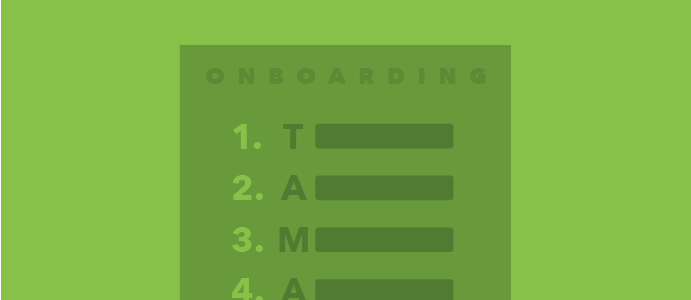Enterprise software onboarding. Three words that'll put you to sleep faster than an Ambien and a warm glass of milk.
You see, the goal for all of us salespeople is to expose our offering to potential customers, have it spread like wildfire throughout an organization, then swoop in to collect the six-figure contract a few months later. Dreams are great, but if step 1 is creating something valuable to sell, step 2 is robust processes to get users on board. Onboarding may seem insignificant, but it can have a staggering impact on the growth of an opportunity.
We've worked incredibly hard at Clari to re-imagine what "ramping up a user" looks like by taking the traditional colorless, monotone, slow process as motivation to do better. For us, it's all about taking the "bored" out of onboarding.
If you onboard your own customers, join us in showing the world it can be a celebration, not a chore. It's not easy to get there—and we know we still have a lot of work to do—but here's our home-grown onboarding recipe for wow-ing customers right out of the gate. We call it TAMALES for the Enterprise!
T - Talk through an agenda
Customers crave context. It gives them something to hold onto. Books do it with tables of contents, movies do it with trailers. You should do it with a short agenda to begin the meeting. It serves both you and your customer with an organized structure to follow. It's comforting, like the lei they put around your neck when you first land in Honolulu.
A - Act human
Look, I get you're a salesperson and it's all about the benjamins, but your beloved customers are human too. Make your session more about solving their business issue and less about making your quota, because if you can do the former, you'll accomplish the latter. And that's a Guaran-tamale-ee™!
M - Manage your time
I book 30 minutes for my training sessions. However, customers are typically 2 minutes late, wrapping up another call or dialing in to the bridge; it can take another 5 for them to get into screen share; by the time we dive in, I've got about 20 minutes to blow them away. What's the lesson? Keep to your agenda and be ultra-clear because when the session ends, you disappear and your customer has a job to do. It's not what you cover, it's what they remember.
A - Add value, not features
If you've got 64 features, you've got to cover them all, right? Wrong. Customers don't care about what your product or service does; they care about what it does for them. Bells and whistles are great, but only if they support a real use case. And here's a little secret: if you deliver a strong-enough training to put the building blocks in place, your customers will often uncover the bells and whistles without you. Your customers are smart. Trust them. It's tough to shift your focus away from features—especially if you helped build the product and are proud of what it can do—but to resonate, focus on making your customer's life better, not on your data sheet.
L - Language is everything
We all know you're an expert on your product, but unfortunately no one else is. Most people would tell you to "bring it down a level." Maybe. But maybe "bringing it down" is the wrong mindset. What we should be doing is getting it right and doing it fast. As soon as you hop on the phone, identify your customer's pain points, figure out their preferred language, and drive home the message. It's not enough to be an expert in your product—you need to understand the market so you can think on your feet about the best way to position and sell. It's all about language.
E - End with next steps
All good things must ... continue! And software trainings aren't an exception. As the training comes to a close, ask your customer if it's OK to follow up in 2 weeks to see how things are going. Even better, give them a couple of quick homework assignments with your product so 1. they have an immediate reason to practice what you've preached, and 2. you have something to talk about when you follow up. Think of next steps as the bow on the present.
S - Special sauce
I won't give away what I do that's different and special, but I encourage you to do something unique and something memorable every time. It could be a joke, a story, an interesting way to open or close the call, something that is 100% genuinely you.
I know you're asking yourself, "OK, Kyle, but why tamales?" Great question. The answer is simple: anytime I've ever had a tamale, it's been a remarkable experience (seriously!) and I always want more. Tamales are conveniently wrapped; purposeful, yet simple; and, best of all, they are so damn good I could eat them all day. If you can make your trainings more like a tamale, your customers will always want more.
Good luck, friends.


